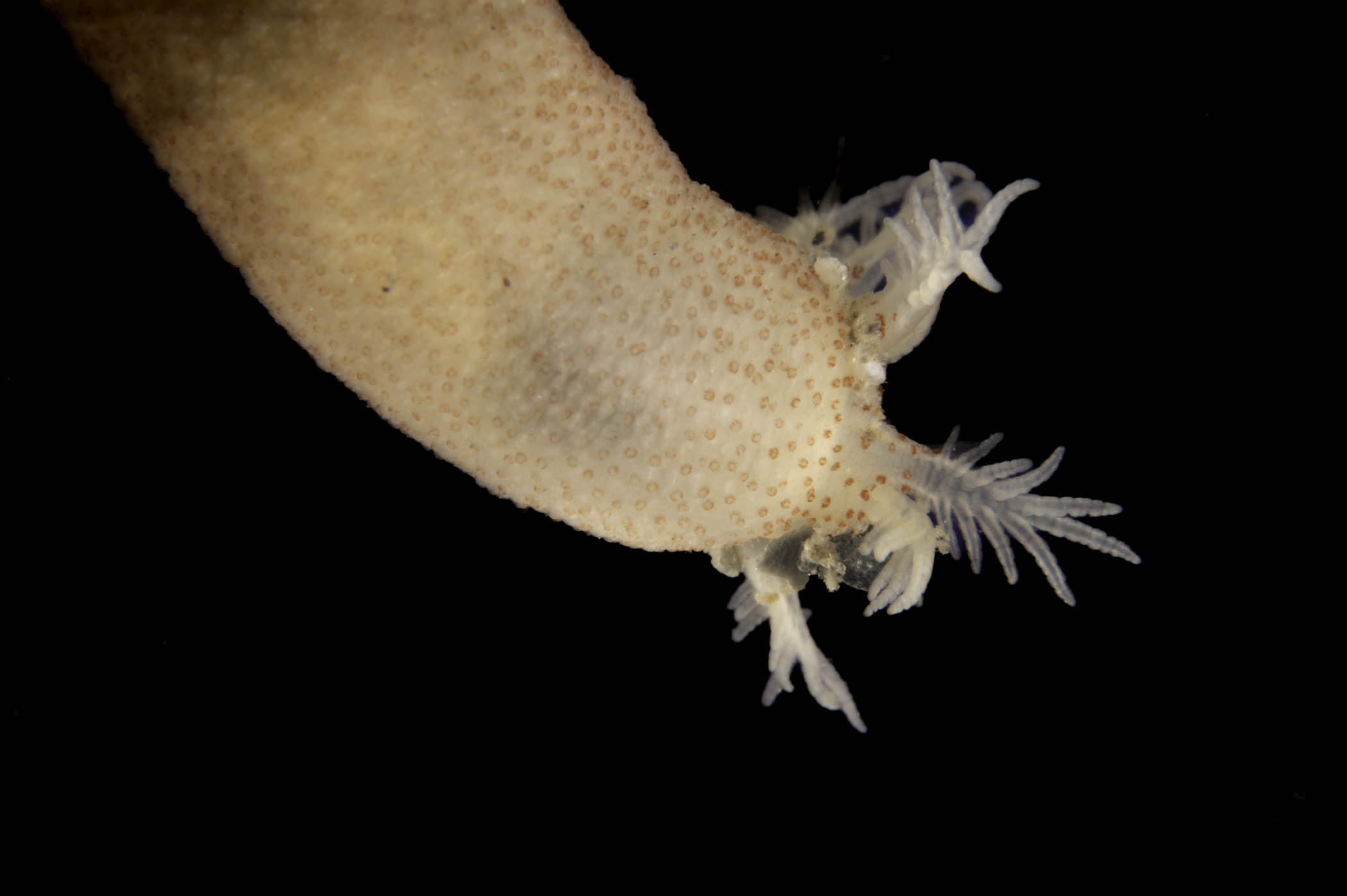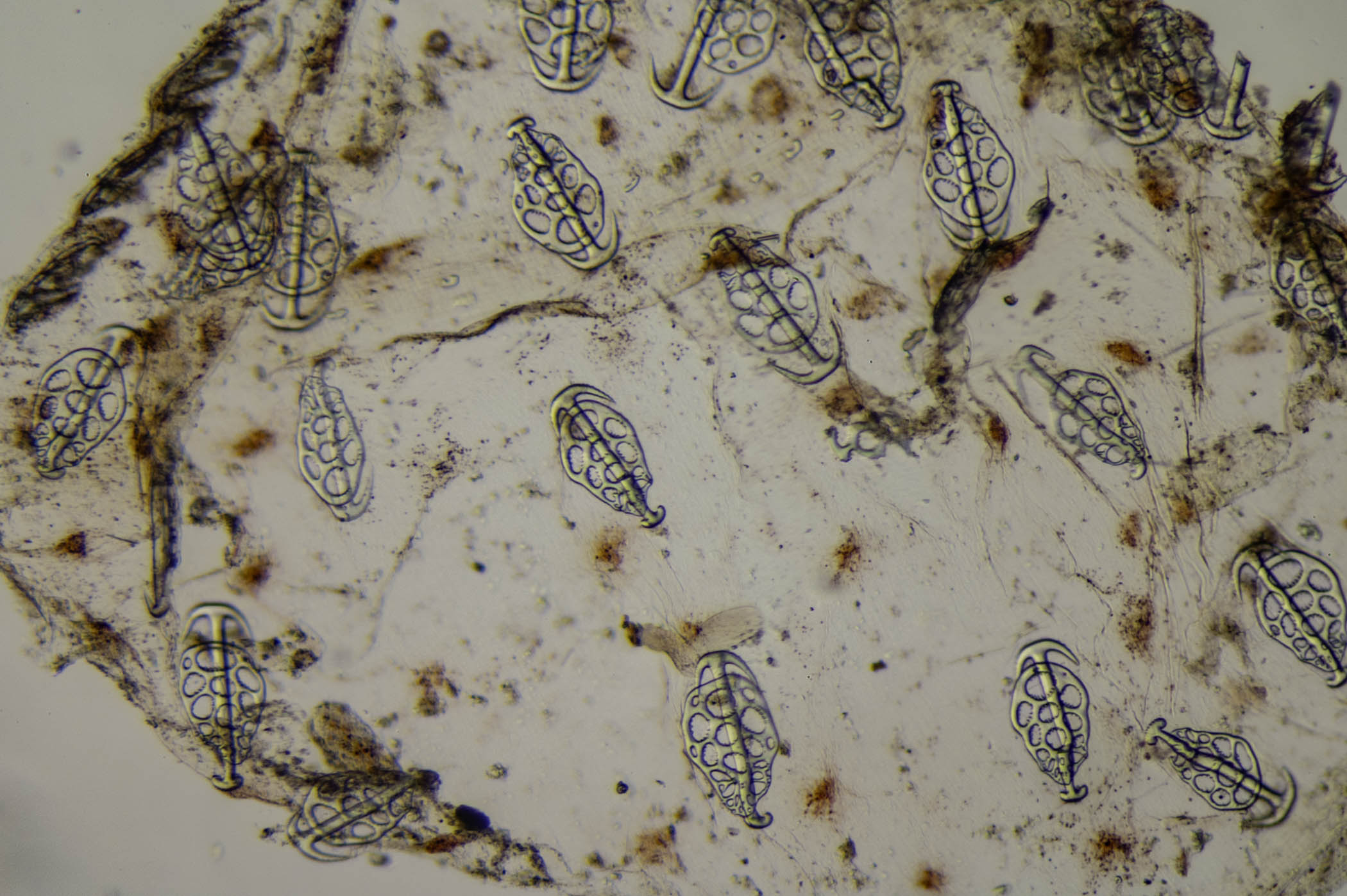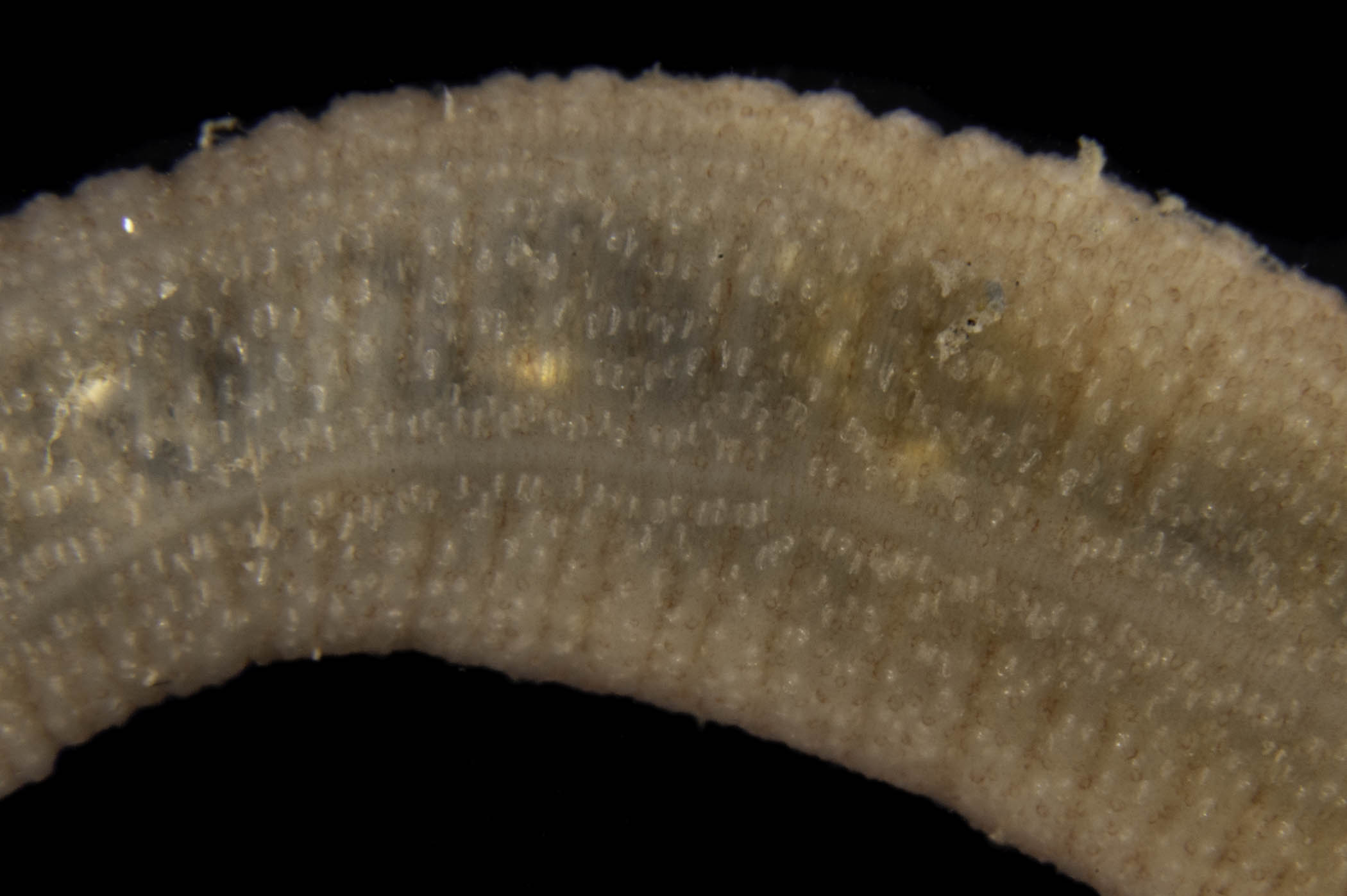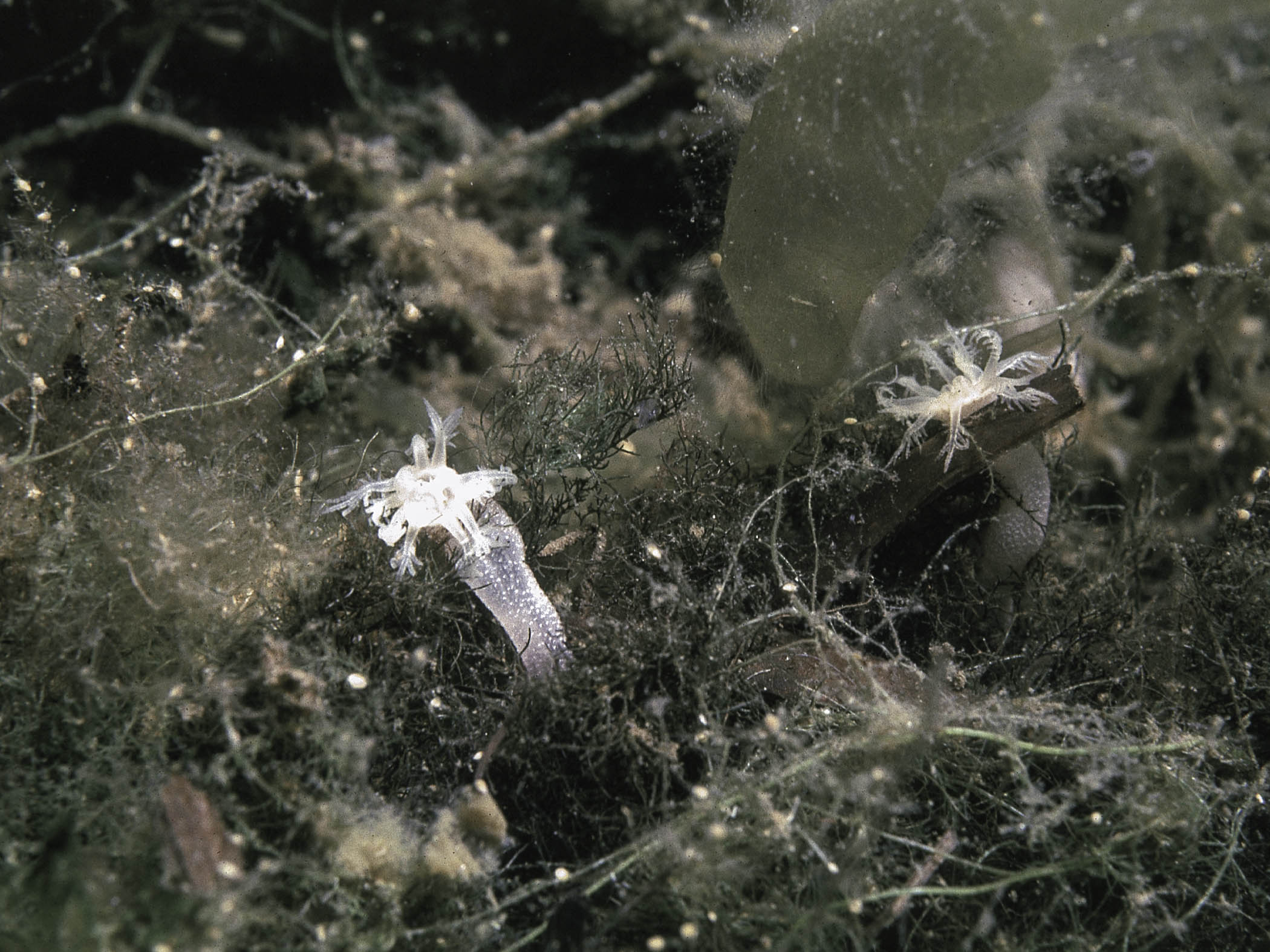| ECHINODERMATA : Apodida : Synaptidae | STARFISH, SEA URCHINS, ETC. |
Leptosynapta inhaerens (O.F. Müller, 1776)
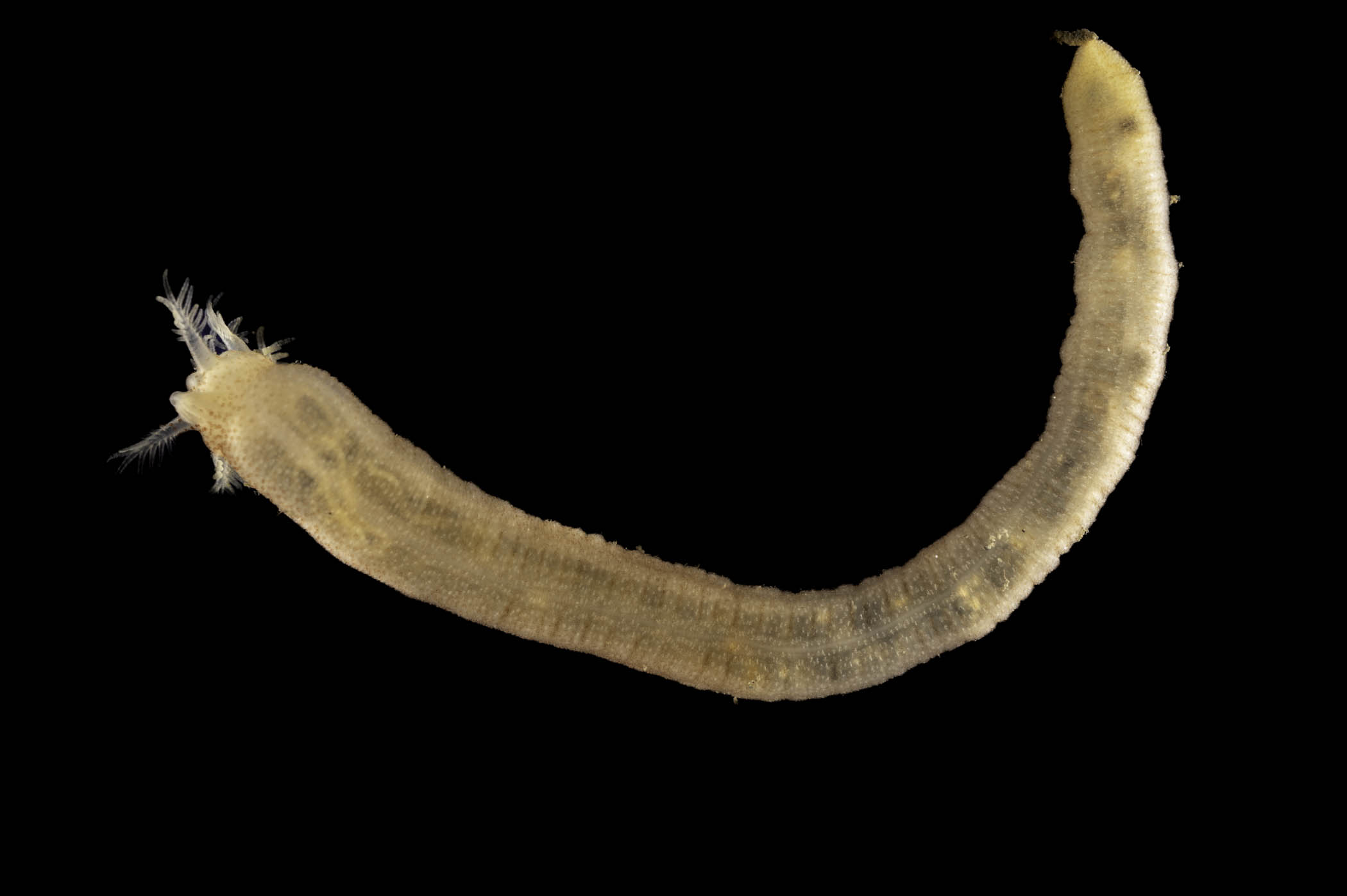 |
| Leptosynapta inhaerens |
Description: A worm-like holothurian with twelve pinnate tentacles and no tube-feet. Each tentacle has 5-7 pairs of digits, increasing in length towards the end of the tentacle. Colour is pale pink with a transparent skin and obvious longitudinal muscle-bands. Spicules are anchors associated with pear-shaped flat anchor-plates. Typically 10-15cm in length.
Habitat: Burrows in muddy sand or gravel from the intertidal to 50m. May also be found amongst flocculent algae and the bases of Zostera plants. Some tropical synaptids are nocturnal and it is possible that the British species emerge more at night to feed.
Distribution: Found on western coasts of the British Isles and on the NE coast of Scotland.
Similar Species: All British synaptids are superficially similar and their tentacles and spicules must be examined with a microscope or hand-lens to distinguish the species.
Key Identification Features:
- Worm-like burrowing holothurian with no tube-feet.
- 12 pinnate tentacles with 5-7 pairs of digits.
- Shape of spicules.
Distribution Map from NBN: Leptosynapta inhaerens at National Biodiversity Network mapping facility, data for UK.
iNaturalist: Leptosynapta inhaerens at iNaturalist World Species Observations database.
GBIF data for Leptosynapta inhaerens
WoRMS: Leptosynapta inhaerens at World Register of Marine Species. Accepted name: Leptosynapta inhaerens (O.F. Müller, 1776). AphiaID: 124465.
Classification: Biota; Animalia; Echinodermata; Echinozoa; Holothuroidea; Paractinopoda; Apodida; Synaptidae; Leptosynapta
| Previous species | Next species |
| Picton, B.E. & Morrow, C.C. (2024). Leptosynapta inhaerens. (O.F. Müller, 1776). [In] Encyclopedia of Marine Life of Britain and Ireland. https://www2.habitas.org.uk/marbiop-ni/speciesaccounts.php?item=ZB5260. Accessed on 2025-04-19 |
